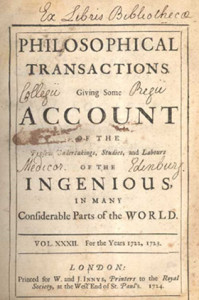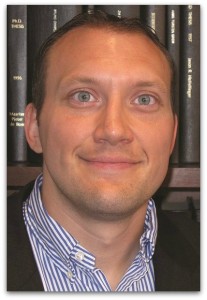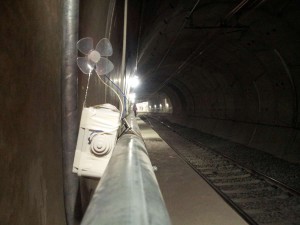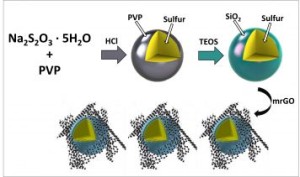A new breakthrough in energy harvesting could potentially power life on other habitable planets.
The new development out of Northumbria University incorporates an innovative technique to harvest energy from carbon dioxide.
A new breakthrough in energy harvesting could potentially power life on other habitable planets.
The new development out of Northumbria University incorporates an innovative technique to harvest energy from carbon dioxide.

By combining green wall technology and solar panels, researchers have been able to generate renewable energy during both night and day.
Image: University of Cambridge
Researchers from Cambridge University have developed what is being considered “the greenest bus shelter” by combining solar power and plant power.
The scope of this project is much more vast than simply powering a bus shelter. Researchers are looking at this development as a possible answer to affordable power generation solutions for developing countries.
“To address the world’s energy needs, we need a portfolio of many different technologies, and it’s even better if these technologies work in synergy,” said Dr. Paolo Bombelli of Cambridge University’s Department of Biochemistry.
The bus shelter has the potential to power itself during both night and day times by harvesting the natural electron by-product of photosynthesis and metabolic activity, thus creating electrical current.

The original cataloging system of the Transactions, with articles bundled into issues and then into volumes, also remains the norm for many journals.
Image: American Institute of Physics
Today the scientific community is celebrating the 350th anniversary of the founding of the scientific journal.
The path to the widespread dissemination of scientific research began with Henry Oldenburg – the first secretary of the Royal Society. The publication of the pioneering journal Philosophical Transactions of the Royal Society consisted of a collection of articles submitted by members of the Royal Society – mainly made up of physicians or “natural philosophers”, who would eventually become know as scientists.
Philosophical Transactions of the Royal Society had many similarities to the modern day scientific journal, including the basic layout and peer-reviewed certification of articles. The journal also focused on the importance of wide dissemination by distributing to those outside its circle.
This flagship journal even marks the beginning of the journal subscription model.
While Philosophical Transactions of the Royal Society paved the way scientific journals would be published and distributed for many years, we’ve seen many changes in light of the digital boom.
Offshore wind farms in the United States have been met with a lot of resistance. While countries such as Europe have roughly 2,488 off shore wind turbines up and running, America has none.
Cape Wind – an initiative in offshore wind farms out of Massachusetts – has been attempting to establish their 130-turbine project for quite some time now, but have not been able to cut through the red tape.
While the outlook for the Cape Wind project appears to be grim, another initiative is rising in the ranks and is determined to get the United States on the offshore wind farm scoreboard.
ECS’s Energy Technology Division has presented three distinguished student awards to be accepted at the 227th ECS Meeting this May in Chicago, IL.
The Energy Technology Division Supramaniam Srinivasan Young Investigator Award will be presented to William Mustain of the University of Connecticut.
 William Mustain earned a Ph.D. in Chemical Engineering at the Illinois Institute of Technology in 2006, followed by two years as a Postdoctoral Fellow in ECS President Paul Kohl’s research group at Georgia Tech. He went on to join the Department of Chemical & Bimolecular Engineering gat the University of Connecticut in 2008.
William Mustain earned a Ph.D. in Chemical Engineering at the Illinois Institute of Technology in 2006, followed by two years as a Postdoctoral Fellow in ECS President Paul Kohl’s research group at Georgia Tech. He went on to join the Department of Chemical & Bimolecular Engineering gat the University of Connecticut in 2008.
Over the past twelve years, Prof. Mustain has worked in several areas related to electrochemical energy generation and storage, including: catalysts and supports for proton exchange membrane and anion exchange membrane fuel cells and electrolyzers, high capacity materials for Li-ion batteries, the purposeful use of carbonates in low temperature electrochemical systems, and the electrochemical conversion and utilizations of methane and CO2.
Take a peak at his award address, “Near Room Temperature Conversion of Methane to Methanol.”
The Energy Technology Division Supramaniam Srinivasan Young Investigator Award was established in 2011 to recognize and reward an outstanding young researcher in the field of energy technology.
A MIT graduate student is changing the landscape of electromechanical switches.
Farnaz Niroui, an electrical engineering graduate student at MIT, has developed a squeezable nano electrochemical switch with quantum tunneling functions. Her development combats the longstanding problem of the switch locking in an “on” position due to metal-to-metal contacts sticking together.
The challenge of this permanent adhesion is called stiction, which often results in device failure. Niroui looks to solve this issue by creating electrodes with nanometer-thin separators.
She has effectively turned stiction from a problem into a solution.
 Ningde Amperex Technology Ltd. (ATL, China) is announcing a funding opportunity for researchers actively engaged in rechargeable lithium battery technologies. They are offering $100,000-$500,000 to selected projects addressing current problems associated with lithium metal anodes and proposing viable solutions for the commercialization of long-life, high-performance lithium metal secondary batteries for high energy density applications.
Ningde Amperex Technology Ltd. (ATL, China) is announcing a funding opportunity for researchers actively engaged in rechargeable lithium battery technologies. They are offering $100,000-$500,000 to selected projects addressing current problems associated with lithium metal anodes and proposing viable solutions for the commercialization of long-life, high-performance lithium metal secondary batteries for high energy density applications.
The steep demand for improved rechargeable batteries for use in consumer electronics and electric vehicles is driving the search for new battery electrode materials that will achieve higher energy densities. This funding opportunity seeks to develop scalable technologies for improving the performance of lithium metal anodes.
Please submit technical proposals along with a budget justification, confidentiality disclaimer and a cover page identifying the principle investigator, contact information, affiliations, project duration, total funding requested and submission date to Dr. KaiFu Zhong.
The deadline for submissions is July 31, 2015.
Please help recognize outstanding contributions of The Electrochemical Society members to the science and technology of primary and secondary batteries and fuel cells through the Battery Division Awards Program.
Nominations are now being accepted for:
These annual awards have been established by the Division to encourage excellence in battery and fuel cell R&D, recognize promising young engineers and scientists and encourage their publication in the publications of the Electrochemical Society.
The deadline for nominations is March 30, 2015.
Before applying, please review the award rules and complete the appropriate form.
I strongly encourage you to submit your nominations. Thank you.
With my best regards,
Robert Kostecki
ECS Battery Division, Chair

The sensors contain innovative distributive mechanisms, which enable online situation awareness and adaptive learning based on artificial intelligence.
Image: GENESI
If these walls could talk… actually, they can. A new project that goes by the acronym GENESI (Green sEnsor Networks for Structural monItoring) is working to give infrastructure the ability to tell us how it feels.
GENESI researchers are creating various sensor that fit inside buildings, tunnels, and bridges. This novel generation of green wireless sensor networks’ main aim is to allow structures to communicate their status.
The sensor device itself combines a low power node platform with a multi-source energy harvester, a small factor fuel cell, and an energy efficient radio. Each sensor has the ability to monitor vibrating strain, displacement, temperature, and soil moisture.

Researchers have investigated a strategy to prevent this “polysulfide shuttling” phenomenon by creating nano-sized sulfur particles, and coating them in silica (SiO2), otherwise known as glass.
Image: Nanoscale
Lithium-sulfur has been a hot topic in battery technology recently. Because of its ability to produce 10 times the amount of energy as a conventional battery, we’ve seen novel innovations such as the all solid state lithium-sulfur battery. Now, the li-sulfur battery is getting a glass coating to further improve its performance.
Researchers at the University of California, Riverside have applied a glass cage-like coating, along with graphene oxide, to the li-sulfur battery. This innovation was developed in order to overcome one of the major issues in commercializing the battery – polysulfides, which cause the battery’s capacity to decrease over its lifetime.
The cathode material traps the polysulfides in a very thin glass cage. Researchers used an organic precursor to construct the trapping barrier.